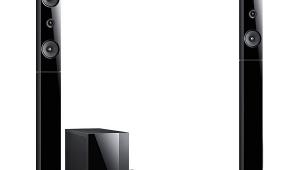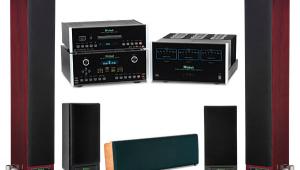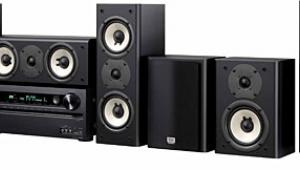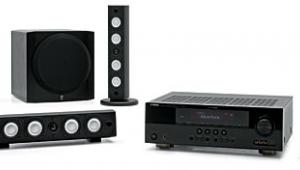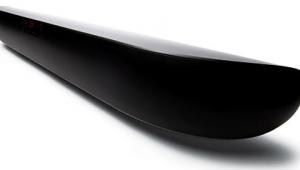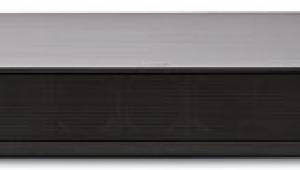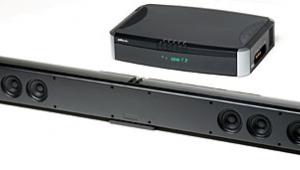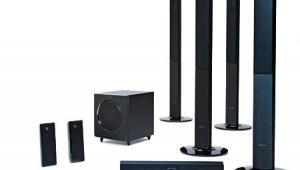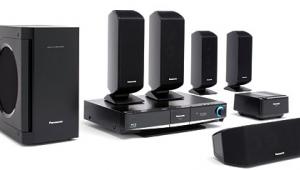Dreaming the Not-Impossible Dream HT Labs Measures
McIntosh MX121 A/V Control Center
Analog frequency response in Pure Direct mode:
–0.25 dB at 10 Hz
–0.08 dB at 20 Hz
–0.06 dB at 20 kHz
–0.41 dB at 50 kHz
Analog frequency response with signal processing:
–0.64 dB at 10 Hz
–0.20 dB at 20 Hz
–0.19 dB at 20 kHz
–15.44 dB at 50 kHz
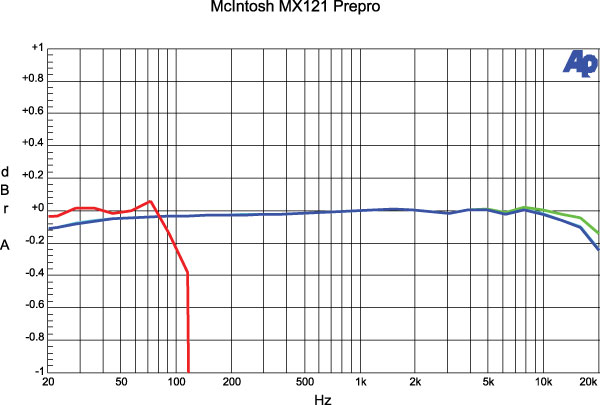
The above chart shows the frequency response of the left (cyan), center (green), LFE (red), and left surround (blue) channels at the preamp outputs of the Dolby Digital decoder. The left channel measures –0.10 decibels at 20 hertz and –0.24 dB at 20 kilohertz. The center channel measures –0.11 dB at 20 Hz and –0.14 dB at 20 kHz, and the left surround channel measures –0.10 dB at 20 Hz and –0.25 dB at 20 kHz. The LFE channel, normalized to the level at 40 Hz, is –0.03 dB at 20 Hz, reaches the upper –3dB point at 118 Hz, and reaches the upper –6dB point at 121 Hz.
Response from the multichannel input to the main output measures –0.19 dB at 10 Hz, –0.05 dB at 20 Hz, –0.00 dB at 20 kHz, and –0.03 dB at 50 kHz. The analog THD+N is less than 0.015 percent at 1 kHz with a 100-millivolt input and the volume control set to 2.5. Crosstalk with a 100-mV input was –88.16 dB left to right and –89.29 dB right to left. The signal-to-noise ratio with “A” weighting was –125.62 dBrA. —MJP
Video Test Bench
The McIntosh pre-pro sailed through our tests almost without a hitch. The only shortcoming was a borderline score on chroma resolution, where visible darkening of the highest-level burst pattern indicated a modest rolloff in the highest video frequencies. This is not uncommon, and previous experience with other products having a similar rolloff suggests that this should not have any negative visible consequences. —TJN

While the MX121 pre-pro turned in a near-perfect score in our video tests, the MVP891 disc player had some issues. The failure on the 2:2 standard definition test is one we see often. In addition, the player clipped both too quickly above white (above a video level of 238; video white is 235 but headroom should extend at least 2 percent above this level, preferably more) and below black (it passed nothing below the video l evel 17; video black is 16). —TJN

McIntosh MC8207 Multichannel Power Amplifier
Two channels driven continuously into 8-ohm loads:
0.1% distortion at 236.2 watts
1% distortion at 271.7 watts
Five channels driven continuously into 8-ohm loads:
0.1% distortion at 210.1 watts
1% distortion at 224.1 watts
Seven channels driven continuously into 8-ohm loads:
0.1% distortion at 201.4 watts
1% distortion at 209.0 watts
Frequency response:
–0.34 dB at 10 Hz
–0.10 dB at 20 Hz
–0.11 dB at 20 kHz
–3.19 dB at 50 kHz
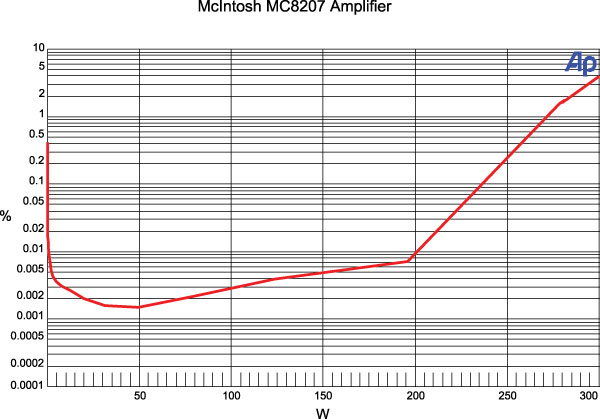
This graph shows that the MC8207’s left amplifier channel, with two channels driving 8-ohm loads, reaches 0.1 percent distortion at 236.2 watts and 1 percent distortion at 271.7 watts. Into 4 ohms, the amplifier reaches 0.1 percent distortion at 415.0 watts and 1 percent distortion at 445.1 watts. An input level of 197.5 millivolts was required to produce an output of 2.83 volts into an 8-ohm load, indicating an overall gain of +23.13 decibels.
THD+N from the amplifier was less than 0.005 percent at 1 kilohertz when driving 2.83 volts into an 8-ohm load. Crosstalk at 1 kHz driving 2.83 volts into an 8-ohm load was –106.29 dB left to right and –104.84 dB right to left. The signal-to-noise ratio with an 8-ohm load from 10 hertz to 24 kHz with “A” weighting was –106.90 dBrA. —MJP
McIntosh XR100 loud Speaker System
L/R Sensitivity:
88 dB from 500 Hz to 2 kHz
Center Sensitivity:
86 dB from 500 Hz to 2 kHz
Surround Sensitivity:
83 dB from 500 Hz to 2 kHz
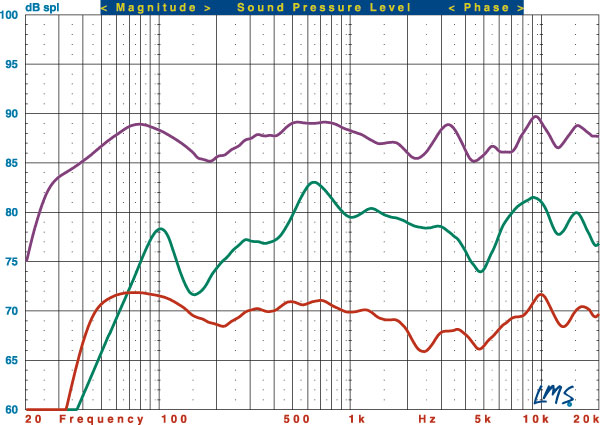
This graph shows the quasi-anechoic (employing close miking of all woofers) frequency response of the XR100 L/R (purple trace), LCR80 center channel (green trace), and XR50 surround (red trace). All passive loudspeakers were measured with grills at a distance of 1 meter with a 2.83-volt input and scaled for display purposes.
The XR100’s listening-window response (a five-point average of axial and +/–15-degree horizontal and vertical responses) measures +1.71/–2.82 decibels from 200 hertz to 10 kilohertz. The –3dB point is at 39 Hz, and the –6dB point is at 26 Hz. Impedance reaches a minimum of 3.73 ohms at 8.6 kHz and a phase angle of –86.08 degrees at 59 Hz.
The LCR80’s listening-window response measures +3.02/–6.06 dB from 200 Hz to 10 kHz. An average of axial and +/–15-degree horizontal responses measures +2.99/–5.28 dB from 200 Hz to 10 kHz. The –3dB point is at 89 Hz, and the –6dB point is at 76 Hz. Impedance reaches a minimum of 5.23 ohms at 8.1 kHz and a phase angle of –57.16 degrees at 84 Hz.
The XR50’s listening-window response measures +1.65/–4.15 dB from 200 Hz to 10 kHz. The –3dB point is at 40 Hz, and the –6dB point is at 37 Hz. Impedance reaches a minimum of 5.70 ohms at 7.5 kHz and a phase angle of –57.67 degrees at 74 Hz.—MJP
